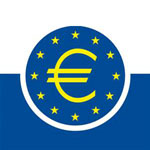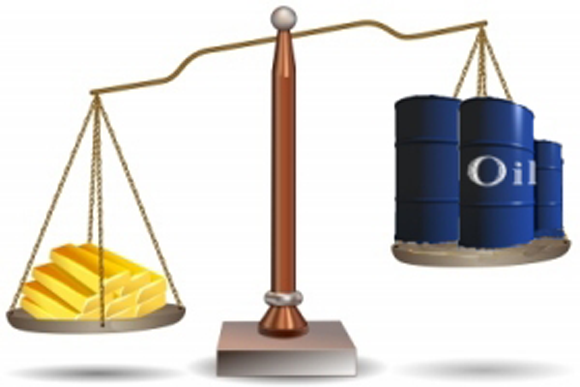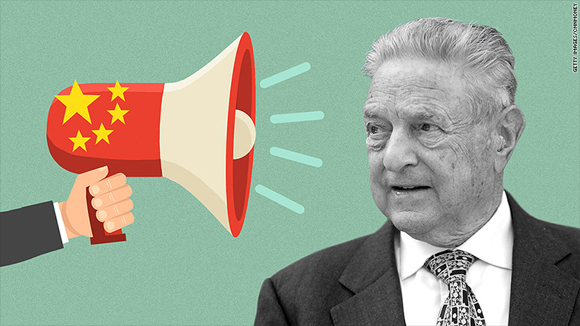 The Greenback Gets Smashed…Looks like 2016 will be a turbulent year! A Close Look At Gold & Oil… So far this year we’ve seen a dramatic droppoff in the global prices of crude. This has gone hand in hand with the dropoff in global equity markets, and of course the rally in Gold.Can The ISM Foretell A U.S Recession…, Central Banks vs. The Markets…, Japanese Shock Markets With Cut Into Negative Territory…the Bank of Japan Governor, Kuroda, announced the BoJ decision to cut rates into negative territory.
The Greenback Gets Smashed…Looks like 2016 will be a turbulent year! A Close Look At Gold & Oil… So far this year we’ve seen a dramatic droppoff in the global prices of crude. This has gone hand in hand with the dropoff in global equity markets, and of course the rally in Gold.Can The ISM Foretell A U.S Recession…, Central Banks vs. The Markets…, Japanese Shock Markets With Cut Into Negative Territory…the Bank of Japan Governor, Kuroda, announced the BoJ decision to cut rates into negative territory.
The Greenback Gets Smashed
![]() 4.02.2016 Yesterday global markets saw some major turmoil, similar to what we saw back in early January. Looks like 2016 will be a turbulent year! Stock markets around the world fell off to test their January lows and the greenback got hammered off the back of a poor ISM Non-Manufacturing reading. With the ISM Manufacturing Index coming in within contraction territory for the last three months, the fall in the Services Sector pushed the already wobbly positive market sentiment to the curb. Stock markets managed to bounce back slightly forming what could be a double bottom pattern, however this morning the dollar weakness continued. NFP figures, released Friday are now expected to fall well below expectations. Moreover, if we do get a poor report, then all hopes of another rate hike by the Fed in March will go out the window. Ultimately divergence is still in play, however for now it will just play a minor part within the global economic trend. In order for dollar strength to come back we’ll need further easing from both the ECB and Bank of Japan along with some more positive U.S data. We should not underestimate the value traders place on the ISM reports and if anything, this week has shown that. More and more it’s looking like we’ll see a U.S recession on the cards.
4.02.2016 Yesterday global markets saw some major turmoil, similar to what we saw back in early January. Looks like 2016 will be a turbulent year! Stock markets around the world fell off to test their January lows and the greenback got hammered off the back of a poor ISM Non-Manufacturing reading. With the ISM Manufacturing Index coming in within contraction territory for the last three months, the fall in the Services Sector pushed the already wobbly positive market sentiment to the curb. Stock markets managed to bounce back slightly forming what could be a double bottom pattern, however this morning the dollar weakness continued. NFP figures, released Friday are now expected to fall well below expectations. Moreover, if we do get a poor report, then all hopes of another rate hike by the Fed in March will go out the window. Ultimately divergence is still in play, however for now it will just play a minor part within the global economic trend. In order for dollar strength to come back we’ll need further easing from both the ECB and Bank of Japan along with some more positive U.S data. We should not underestimate the value traders place on the ISM reports and if anything, this week has shown that. More and more it’s looking like we’ll see a U.S recession on the cards.
A Close Look At Gold & Oil
 3.02.2016 So far this year we’ve seen a dramatic droppoff in the global prices of crude. This has gone hand in hand with the dropoff in global equity markets, and of course the rally in Gold. Gold is treated as both a safe haven asset and a hedge against inflation. Because of this it can be very easy to get caught up going against the trend. The long term trend is down, due to the overriding deflationary forces currently going on. Deflation, in conjunction with the recent dollar rally has caused the shiny metal to fall and remain below its key 1200 level for an extended period of time. For now I think we could see a bit more of a rally higher, due to the current risk off sentiment, however by no means is the bearish trend over. Until the dollar rally is well and truly over and deflationary forces have been overcome, I dont see gold moving substantially above the 1200 mark. That is unless we get another big fat recession, which causes market particpants to panic and buy the hell out of gold. Who knows… Oil on the other hand is a much more political game. The Saudi vs. U.S shale gas conflict seems to have been over run by the Saudi vs. Iranian conflict. The U.S now seem to be backing Iran against the Saudis, due to numerous political reasons. If this theme becomes stronger, and we see more unrest in Saudi Arabia, who knows what could happen. If we do get a major HOT conflict then expect oil to hit $80-$100 overnight. This will of course be a massive money maker for the U.S shale producers as well. Im not into conspiracy theories, but we must consider how you would behave if you were the U.S Government. Wouldn’t you want the best for your companies…?
3.02.2016 So far this year we’ve seen a dramatic droppoff in the global prices of crude. This has gone hand in hand with the dropoff in global equity markets, and of course the rally in Gold. Gold is treated as both a safe haven asset and a hedge against inflation. Because of this it can be very easy to get caught up going against the trend. The long term trend is down, due to the overriding deflationary forces currently going on. Deflation, in conjunction with the recent dollar rally has caused the shiny metal to fall and remain below its key 1200 level for an extended period of time. For now I think we could see a bit more of a rally higher, due to the current risk off sentiment, however by no means is the bearish trend over. Until the dollar rally is well and truly over and deflationary forces have been overcome, I dont see gold moving substantially above the 1200 mark. That is unless we get another big fat recession, which causes market particpants to panic and buy the hell out of gold. Who knows… Oil on the other hand is a much more political game. The Saudi vs. U.S shale gas conflict seems to have been over run by the Saudi vs. Iranian conflict. The U.S now seem to be backing Iran against the Saudis, due to numerous political reasons. If this theme becomes stronger, and we see more unrest in Saudi Arabia, who knows what could happen. If we do get a major HOT conflict then expect oil to hit $80-$100 overnight. This will of course be a massive money maker for the U.S shale producers as well. Im not into conspiracy theories, but we must consider how you would behave if you were the U.S Government. Wouldn’t you want the best for your companies…?
Can The ISM Foretell A U.S Recession
![]() 2.02.2016 For the third consecutive release we’ve seen contraction in the U.S manufacturing sector. As I’ve mentioned before, the U.S ISM Manufacturing PMI has historically had a good correlation with both GDP and the stock market. Obviously this relationship is delayed and measured over a long time-frame, however in saying that we should now be very cautious in regards to going net long U.S stocks. If we continue to see further contraction across the U.S manufacturers, which remember are the backbone of the U.S economy, then it will entirely depend on the Service sector to keep GDP growth above 0%. Personally, I’d be looking more and more at securing your portfolio with CFDs, Options and/or inverse ETFs. If we do enter a bear market in 2016, then you won’t regret it!
2.02.2016 For the third consecutive release we’ve seen contraction in the U.S manufacturing sector. As I’ve mentioned before, the U.S ISM Manufacturing PMI has historically had a good correlation with both GDP and the stock market. Obviously this relationship is delayed and measured over a long time-frame, however in saying that we should now be very cautious in regards to going net long U.S stocks. If we continue to see further contraction across the U.S manufacturers, which remember are the backbone of the U.S economy, then it will entirely depend on the Service sector to keep GDP growth above 0%. Personally, I’d be looking more and more at securing your portfolio with CFDs, Options and/or inverse ETFs. If we do enter a bear market in 2016, then you won’t regret it!
Central Banks vs. The Markets
 1.02.2016 With all the QE and monetary easing going on, in conjunction with the U.S beginning a hiking cycle, the world is going through a period of economic history which many analysts are referring to as ” uncharted territory”. Divergence is of course the major theme, and we all know that. What will the affect be of all this Monetary Easing mean though…?
1.02.2016 With all the QE and monetary easing going on, in conjunction with the U.S beginning a hiking cycle, the world is going through a period of economic history which many analysts are referring to as ” uncharted territory”. Divergence is of course the major theme, and we all know that. What will the affect be of all this Monetary Easing mean though…?
Last week the BoJ added to the fire, with an unexpected cut in their interest rates to -0.1%. The following statement from MarketWatch, I thought, was a great description of what this means: “The Bank of Japan announced it had cut the rate on excess reserves to minus 0.1%, meaning institutions will have to pay the central bank for the privilege of parking reserves that exceed those required by regulators.” Central Banks are supposed to be there to provide stability to their respective economy. They were constructed in order to maintain inflation at a stable level and produce steady/stable growth.
The Central Banks of the largest economies on the planet are now all in a tricky place. Japan has been struggling with deflation for years and doesn’t seem to be stopping their policy of economic easing anytime soon, the ECB have started QE and are also in negative rate territory, China are easing and will probably attempt some sort of QE program at some point in either 2016 or early 2017 and the U.S have gone the other way, hiking rates.
All these banks have incredibly low interest rates and are seeing scarily low levels of inflation. I don’t want to be fear mongering, but my biggest fear as of late, has been that we see another recession in the U.S which kicks off another global recession that makes 2008 look like an infant in comparison. George Soros has been branding this as inevitable as of late and although I don’t agree entirely with him, as I am somewhat of an optimist, he does have some very valid points. For now I’d just be very careful about remaining net long the market and remember to secure your portfolio with either options, CFDs or inverse ETFs.
Japanese Shock Markets With Cut Into Negative Territory
![]() 29.01.2016 Early this morning the Bank of Japan Governor, Kuroda, announced the BoJ decision to cut rates into negative territory. Although he did make the attempt to reassure markets that Japanese inflation would eventually hit their target of 2%, probably in the latter half of 2017, markets took this unexpected decision as exactly that, unexpected and sold the Yen across the board. Even though we’ve had all this market turmoil and Yen strength recently, this just goes to show that no matter what the markets do, divergence is still the key dominating force. Central banks globally are still struggling with inflation and to be honest I think they’re getting pretty darn scared. The Euro looks like the next one to get hit. If we get further negative cuts from the ECB along with more QE, then maybe we will see the markets return to their 2015 highs. I don’t see them going much further than that though. Probably best to stick with trading the currencies affected by this years big themes for now and keep on the side of their fundamentals.
29.01.2016 Early this morning the Bank of Japan Governor, Kuroda, announced the BoJ decision to cut rates into negative territory. Although he did make the attempt to reassure markets that Japanese inflation would eventually hit their target of 2%, probably in the latter half of 2017, markets took this unexpected decision as exactly that, unexpected and sold the Yen across the board. Even though we’ve had all this market turmoil and Yen strength recently, this just goes to show that no matter what the markets do, divergence is still the key dominating force. Central banks globally are still struggling with inflation and to be honest I think they’re getting pretty darn scared. The Euro looks like the next one to get hit. If we get further negative cuts from the ECB along with more QE, then maybe we will see the markets return to their 2015 highs. I don’t see them going much further than that though. Probably best to stick with trading the currencies affected by this years big themes for now and keep on the side of their fundamentals.
